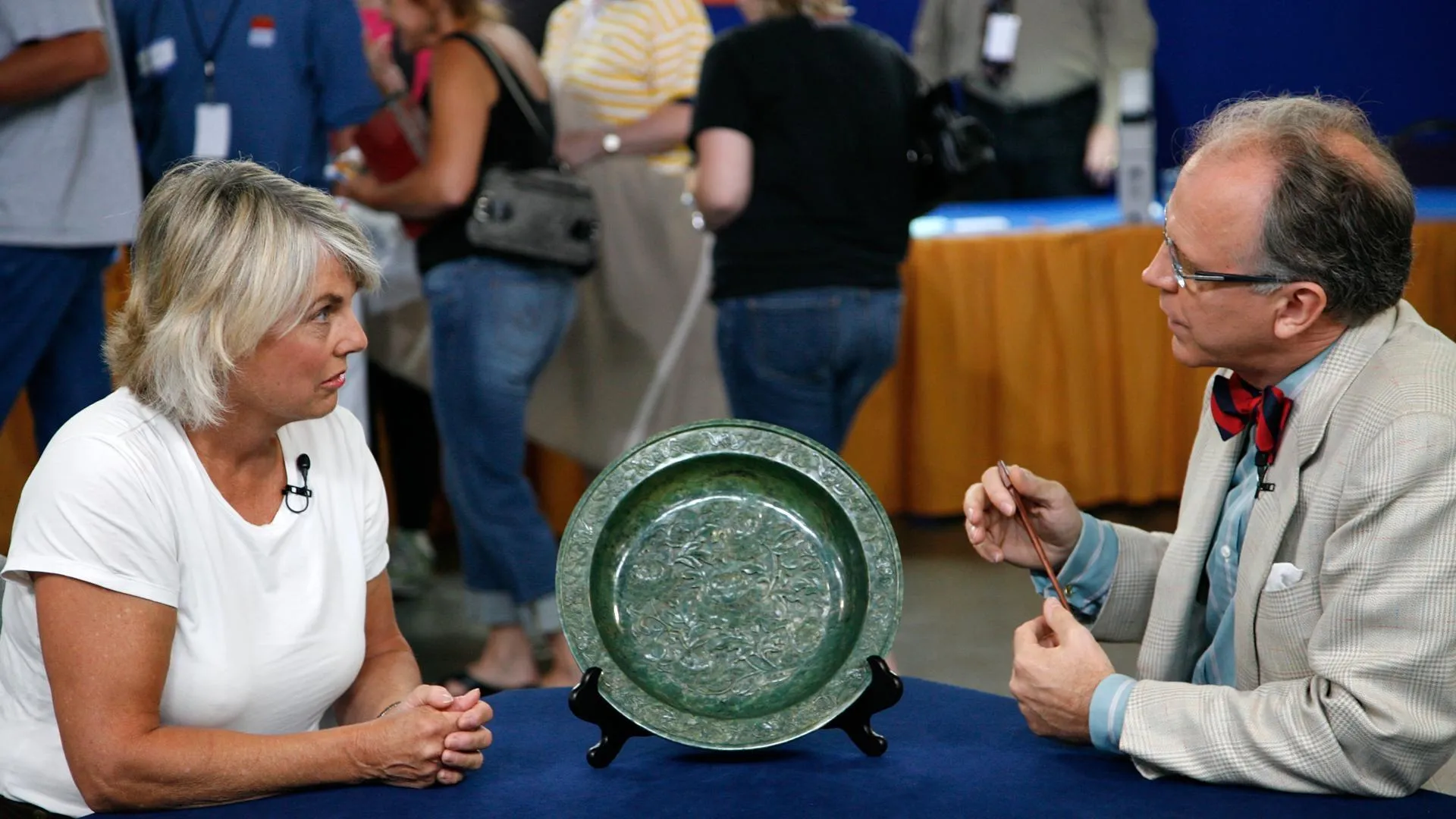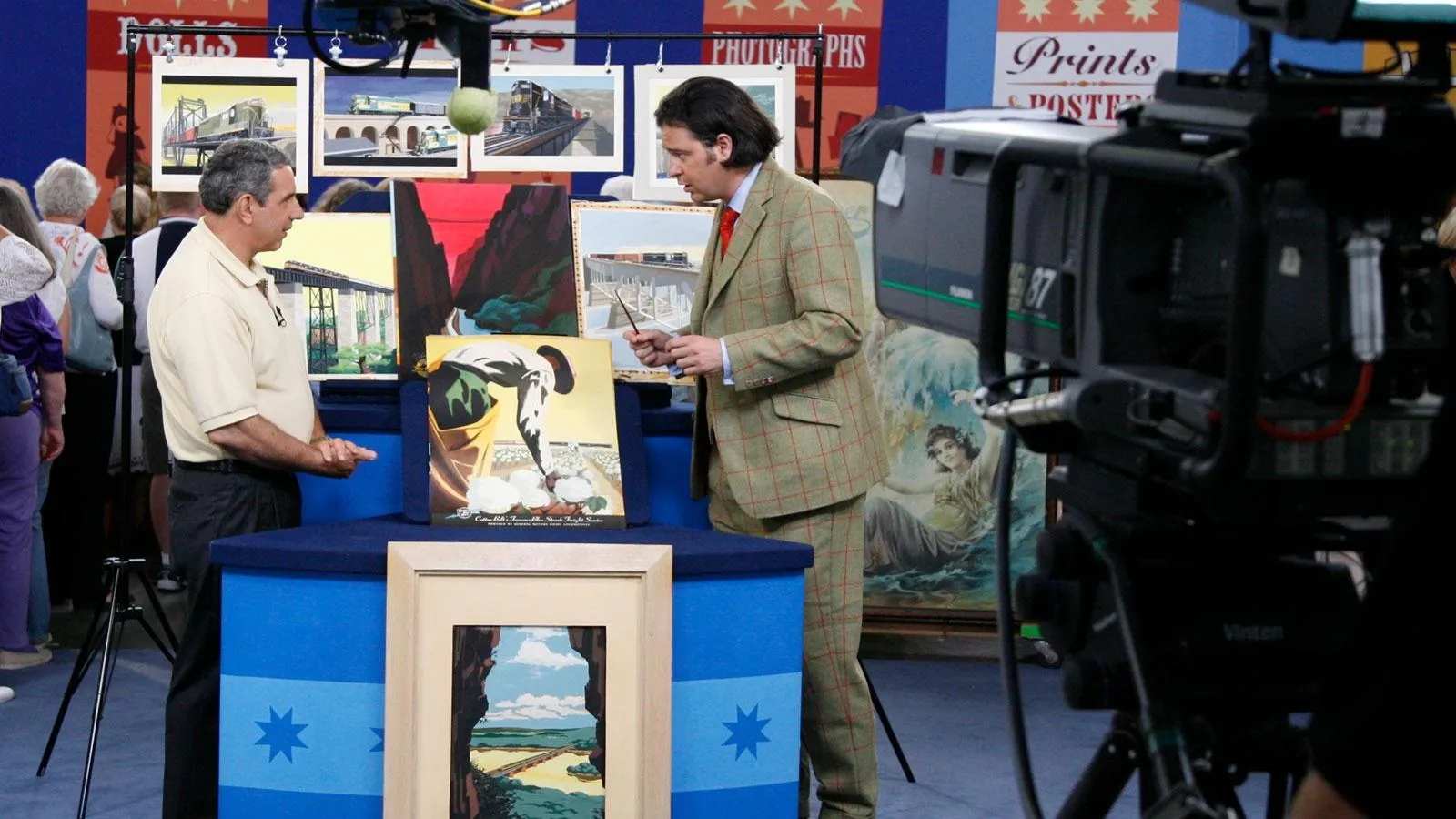GUEST: As far as I know, they came from Europe. They were brought back by my ancestors sometime prior to 1835. I had an ancestor over there who was buying a lot of paintings, and so on and so forth. And these were two of the items that he sent back to other relatives in this country in the Boston area. What I've always heard is that they're Sèvres-- I guess you'd call them urns, not vases, when they reach this size--but I've always heard they were Sèvres. Have never been able to prove that.
APPRAISER: Who told you they were Sèvres?
GUEST: Some documentation when they appeared locally in the J.B. Speed Art Museum, and then also an appraisal that I had done about 25 years ago.
APPRAISER: Okay, there might be some evidence that would lead us down that line. Now, what we are talking about here are a pair of very large and very good French urns.
GUEST: Mm-hmm.
APPRAISER: And they were made in the early 19th century, around about 1810, 1820-- probably closer to 1820. Now, during this time period, what's going on? The Napoleonic Era is just ending, there's a great sense of the empire being out there, so there is a renewed interest in the Classicism. If you notice, all the figures in the front are in Classical poses and in Classical dress.
GUEST: Right, right.
APPRAISER: And on the back, you have a group of military trophies that you would expect to find. And also, which is really interesting, is, you have this sort of two-tone gold to the side.
GUEST: Mm-hmm.
APPRAISER: That's a mark of very, very nice quality, and the handles, as well, which are beautifully molded. So you have two-tone gold, beautifully hand-painted scenes. They're a Classical revival-- but unfortunately, on the bottom, what do we have? We have no mark at all.
GUEST: That's right.
APPRAISER: And Sèvres almost certainly would have been marked at this time period. So they're not Sèvres.
GUEST: Okay.
APPRAISER: But that's okay. There are a number of very, very fine French porcelain makers in and around this time period, perhaps Darte or Nast that did these urns here, because the painting is very, very good. You do see that there is a little bit of damage here. There's a couple of nicks to the gilding.
GUEST: Right, right.
APPRAISER: And it's rubbed a little bit around the base-- those are minor defects, but they will affect the value of it somewhat. And actually, two of the handles have been restored.
GUEST: Oh, really?
APPRAISER: But they were done very well. And you had them, you did have them appraised at one point, right?
GUEST: I did. And that was...
APPRAISER: That was a while ago.
GUEST: A while ago. Yeah. And that was $3,500 at that point, so...
APPRAISER: Right, yeah. At auction, I would expect this pair of urns to bring $15,000, so…
GUEST: Wow. (chuckles) Okay, that's great. But they're not going anywhere.
APPRAISER: If I were insuring these…
GUEST: Mm-hmm.
APPRAISER: I would put a value of $25,000 on them for insurance.
GUEST: I will call the agent in the morning.
APPRAISER: (laughs) There you go.
GUEST: (laughs) Believe me!












